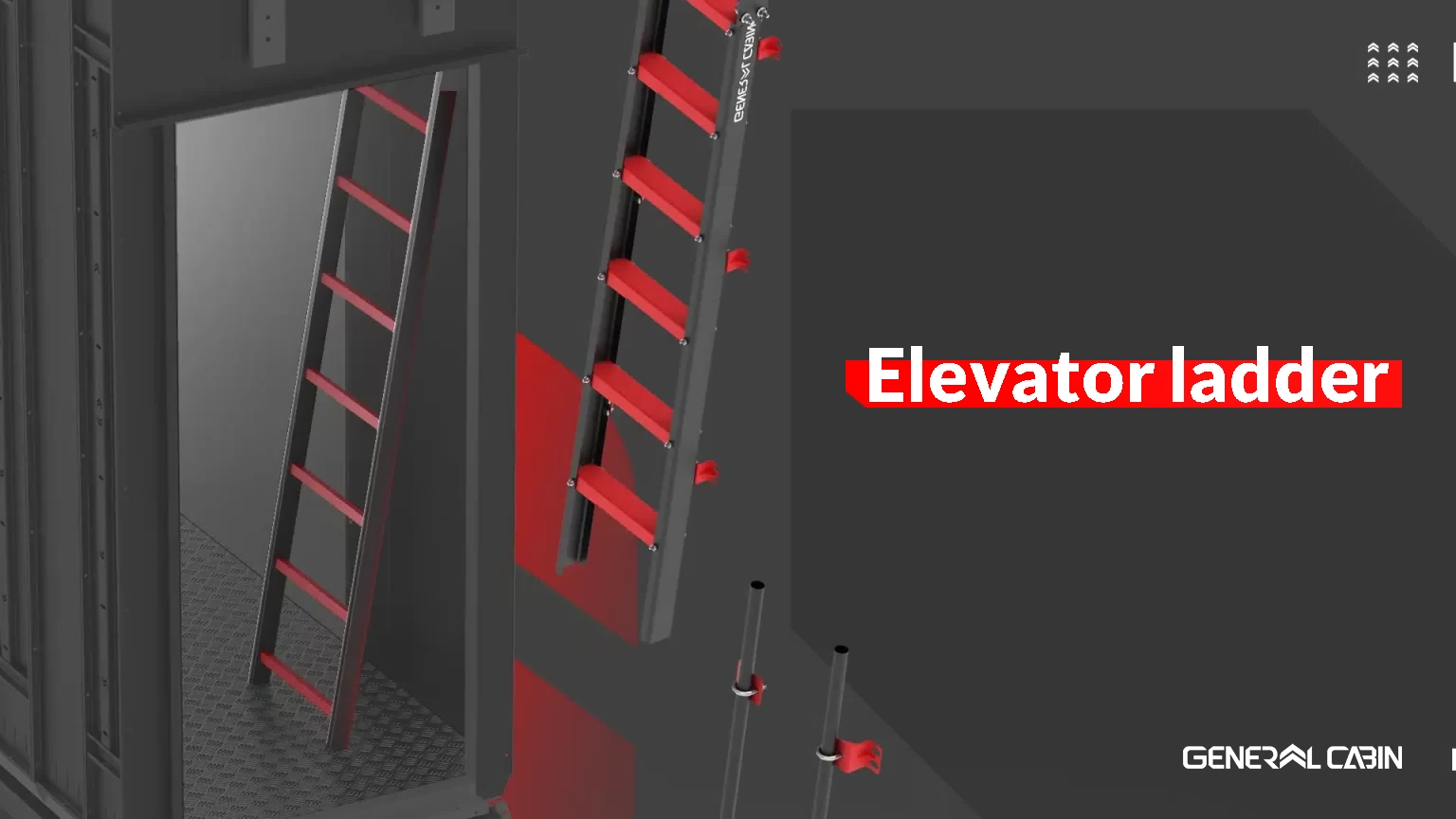
Installation of the elevator ladder
Generally, 3 types of ladders are used in elevators.
Elevator shaft ladder: If there is no access to the elevator shaft, a permanent device such as stairs or an elevator ladder must be installed at the bottom of the elevator shaft.
Elevator Cabin Ladder: In some cabins, such as firefighting and explosion-proof cabins, having a ladder on the cabin wall is essential. The installation location for these ladders inside the elevator cabin should be within a compartment covered by a door. The lock and door of the ladder should be easily accessible to any passenger of any height so that they can easily open the ladder door, exit, and use it.
Motor Room Elevator Ladder: Additionally, ladders are also used to access motor rooms that are located at heights and don’t have access through stairs or hatches, and they have specific standards.
At the General Cabin factory, ladders specifically for the elevator shaft and inside the elevator cabin are produced; however, access ladders to motor rooms are not provided.

Types of Elevator Shaft Ladders
Several different types of ladders are suitable for elevator shafts, all serving the same practical purpose but differing in their layout and design. Typically, there are 6 types of ladders used in elevator shafts, as shown in the image below.

Fire Safety Standards for Elevator Ladders
The fire department has introduced requirements and standards for elevators inside firefighting, fire-resistant, and explosion-proof cabins.
According to the fire safety standard, the presence of a ladder is mandatory, and it must reach up to one meter above the emergency hatch or the escape hatch of the elevator cabin. This is because, according to elevator standards, the height of the ladder should be proportionate to the useful height of the elevator cabin, and even a little shorter is acceptable.
The ladder installed inside the walls of the elevator cabin should have a door and a key so that a passenger can open the door with the key, provided by the rescuer, and use the elevator ladder to exit through the ceiling.

Firefighter Elevator
During a fire, it is necessary to have an available elevator for firefighters so they can efficiently carry out the evacuation of people from the building. This elevator must meet high standards and have a minimum 2-hour fire resistance. Additionally, it should be equipped with a key for control by the firefighters so that its activation is solely under the control of the firefighters from inside the cabin. It should not respond to other calls, to eliminate unnecessary stops and increase the efficiency of the elevator.
According to the building standards, buildings with a height of more than 23 meters must have at least one firefighter elevator, and buildings with a height of more than 40 meters must have at least 2 firefighter elevators.

Requirements for Installing Elevator Access Ladders for Safe Access to Machinery Spaces and Hoistways:
- The access ladder to the machinery room cannot exceed 4 meters.
- The ladder must be secured in such a way that it cannot be removed easily.
- Ladders with a height of more than 1.5 meters must have an inclination angle of approximately 65 to 75 degrees relative to the horizontal plane, and they must not allow slipping or turning.
- The usable width of the ladder must be at least 35 centimeters, and the depth of each step should not be less than 25 mm. In the case of a vertical ladder, there should be a minimum distance of 15 centimeters between the steps and the wall behind the ladder, and each step should withstand a load of 1500N.
In the vicinity of the highest steps of the ladder, at least one easily accessible handrail must be present.
The ladder must be approximately 1.5 meters away from the nearest access opening.

Elevator Ladder Materials
In General Cabin, the ladders are made from a combination of galvanized steel sheets with thicknesses ranging from 2 to 10 millimeters and iron pipes. They are coated with electrostatically applied oven-baked colors that are completely rust- and scratch-resistant.
These ladders do not use welding, and all components are connected with screws and bolts for easy assembly, disassembly, or installation.


